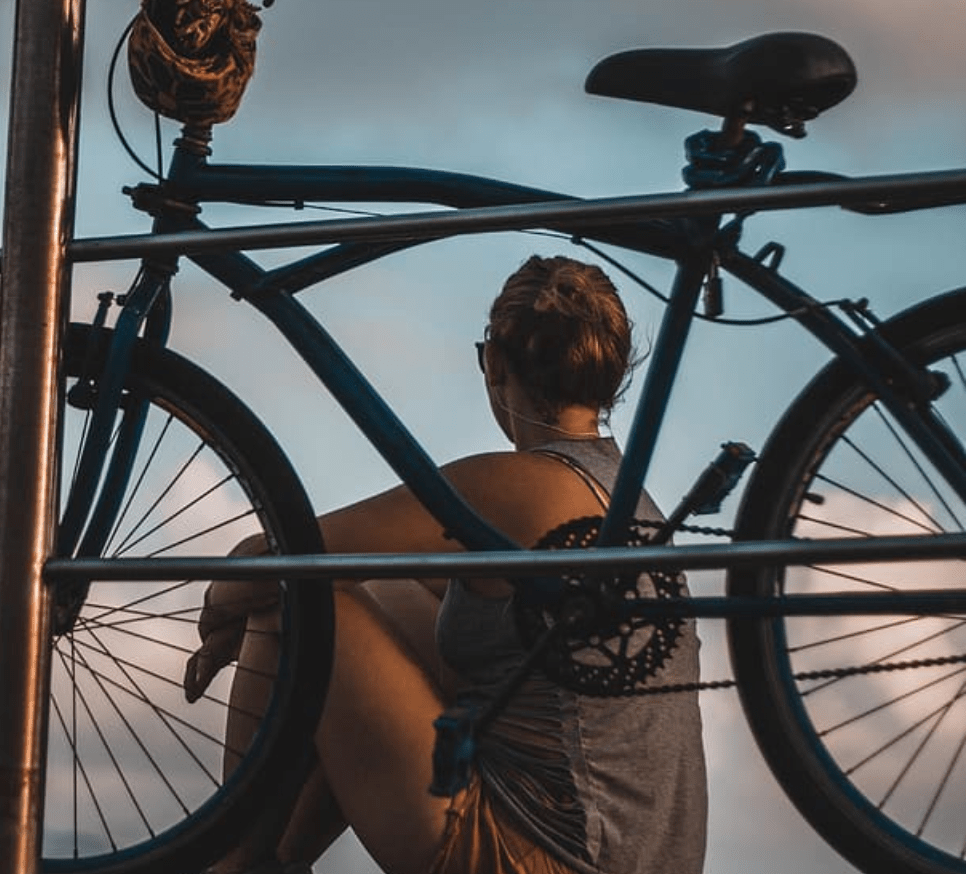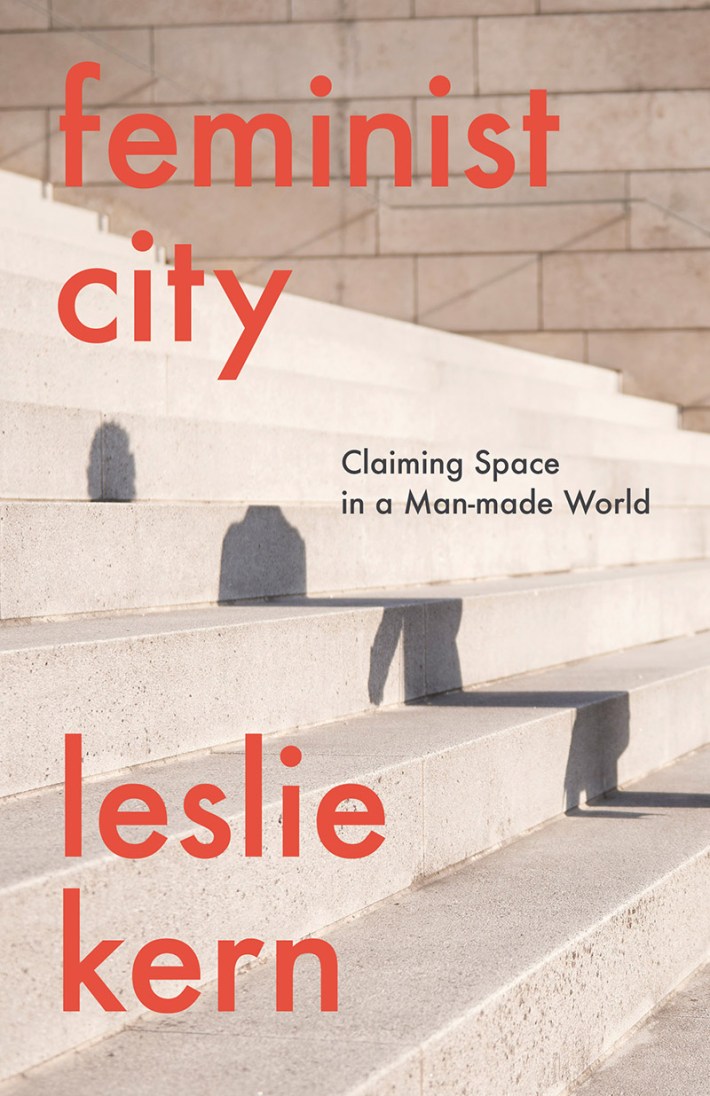What Is a Feminist City?
3:55 PM EDT on August 4, 2020

Source: Creative Commons
Leslie Kern’s “Feminist City” asks us to look around. Does our environment support the daily activities, care work, and needs of women? This recently published book intermixes Kern’s personal stories, real-world examples, and research to expose how our cities, neighborhoods, and transportation decisions make childcare, household activities, and safety challenging for women.
“Feminist City” balances descriptions of our environment with the internal conversations or anxieties we feel as we wait for the bus, rush to pick up our child before daycare closes, and navigate space that’s designed to keep us inside. Kern explores the city through different points of view but also openly acknowledges her own privilege as a cisgender, white woman questioning how her own well-meaning actions can minimize the experience for someone displaced through gentrification.
Recently, Kern graciously agreed to chat with me, discussing the book’s themes and how they apply to us here in the Washington region. The questions and answers from our conversation are condensed for clarity and conciseness.

Whitton: The book has a lot of examples of gender mainstreaming policies, gender analyses, and women’s stories, but I’d love to chat more about the lack of examples in the United States.
Leslie Kern: One of the things I tried to do was to start from my personal experiences in order to provide a storytelling aspect. Most of my experiences are in Canadian cities. I talk a little bit about Chicago, but I think there is a lot of parallels in general for North American cities. We have been so car-oriented and in the ways our suburbs expanded. There are some differences between Canadian and US cities, in terms of things like racial segregation, but we certainly have similar issues around the inequality certain groups face.
Your book was written prior to the pandemic and the recent protests. Can you talk more about the reactions you’ve received since the book’s publication and potential changes you might make following the pandemic and protests?
One of the things that the people have connected with during the pandemic that I touch on in the book are issues around care work in cities, the long-standing gender divisions in care work, and the ways in which some care work is put off on the shoulders of low-income women, women of color, immigrants, etc. The pandemic has made that system much more visible to a lot of people who might not otherwise want to pay attention, and the instability in that system is exposed.
And the Black Lives Matter protests: in the book I talk about the earlier wave of Black Lives Matter protests, and one of the things that in light of what’s going on, I would have emphasized more clearly is the ways in which a feminist city has to be one that’s a police free city, the police are defunded, or their work is much different than it is now. What about women’s safety in cities and what does it look like if we don’t have the kind of police we currently have?
You talk a lot about gender mainstreaming and give examples of gender analysis policies. What are your favorite examples of these policies and what would you like to see incorporated more into a gender analysis or gender mainstreaming policy?
Gender mainstreaming is a way of looking at all the kind of decisions that cities would make in terms of budgeting and planning and running it through an equity lens. Is this going to improve gender equity? Is it going to be gender neutral or is it perhaps going to work against gender equity? Rather than focus on things that have a more obvious gender equity component to it, such as where is the playground or school going to go, any kind of urban planning decisions could have gender equity implications.
One of the examples in the book is around snow plowing and the ways cities prioritize which roads and areas are plowed first. Most cities will plow major freeways first to clear space for car traffic and we leave residential areas, school zones, bike lanes, and sidewalks until the very end. And this has very obvious gender implications. So some cities have started to ask: what if we did the opposite?
You delve into a concept you call “Gentrification of Parenting.” Can you talk more about what you mean?
The gentrification of parenting kind of refers to this upscaling of parenting in a way that makes it add all this cultural value. It matters to cities in the kinds of places that will cater to young families, particularly gentrifier families or families staying in the city longer and meaning there is a kind of proliferation of shops and boutiques that are designed to appeal to that particular demographic, and that’s okay. But the question is what gets pushed out to make space.
Throughout the book, you emphasize that when we talk about a feminist city, we have to be aware of who we are talking about. The “for whom” question is something we talk a lot about at GGWash. Can you expand a bit more on the “for whom” aspect of a feminist city?
A “Feminist City” wants to start from a different place, but we have to be careful that we don’t simply replace the male breadwinner, middle-class man with a female “pink collar” worker and what her struggles are. Although that would definitely add to the conversation, it would still be a fairly privileged view of what could change or improve, and what can make the city comfortable and accessible for that narrow group of people.
What does a more just and equitable city look like if you start from the standpoint of a disabled person, a senior citizen, a low-income single mother, of a recent immigrant, and all of these pieces of the puzzle are going to give you a slightly different perspective? If we can take these multiple starting points then we might end up with a different way of looking at everything from how bus routes are organized, which neighborhoods they go to, what time, and how does that affect different groups of people.
Do you have a favorite feminist space or a non-feminist space that you want to see be more feminist?
There is a lot we can do with urban design, but it is also about how people use space. So often, what we see is people creatively appropriating spaces beyond what they were originally intended. That top-down, rational planner point of view says this is a space for doing this or just moving through. But people have their own ideas about how space should be used, and I think even if they are temporary spaces, social justice, and social movement interventions really show us that public space can be taken and appropriated in ways that we didn’t plan for.
What can be really powerful about public space is when you have different bodies – bodies that are typically pushed out of those spaces – and groups take over public space and begin to use them in different ways. It is really empowering and pushes back against the idea of the city saying no, this is what you use this space for.
This interview originally appeared on Greater Greater Washington and is republished here with permission.
Kea Wilson has more than a dozen years experience as a writer telling emotional, urgent and actionable stories that motivate average Americans to get involved in making their cities better places. She is also a novelist, cyclist, and affordable housing advocate. She previously worked at Strong Towns, and currently lives in St. Louis, MO. Kea can be reached at kea@streetsblog.org or on Twitter @streetsblogkea. Please reach out to her with tips and submissions.
Read More:
Stay in touch
Sign up for our free newsletter
More from Streetsblog USA
Tuesday’s Headlines Fix It First
How voters incentivize politicians to ignore infrastructure upkeep. Plus, are hydrogen trains the future of rail or a shiny distraction?
The Brake: Why We Can’t End Violence on Transit With More Police
Are more cops the answer to violence against transit workers, or is it only driving societal tensions that make attacks more frequent?
Justice Dept., Citing Streetsblog Reporting, Threatens to Sue NYPD Over Cops’ Sidewalk Parking
The city is now facing a major civil rights suit from the Biden Administration if it doesn't eliminate illegal parking by cops and other city workers.
Five Car Culture Euphemisms We Need To Stop Using
How does everyday language hide the real impact of building a world that functionally requires everyone to drive?




